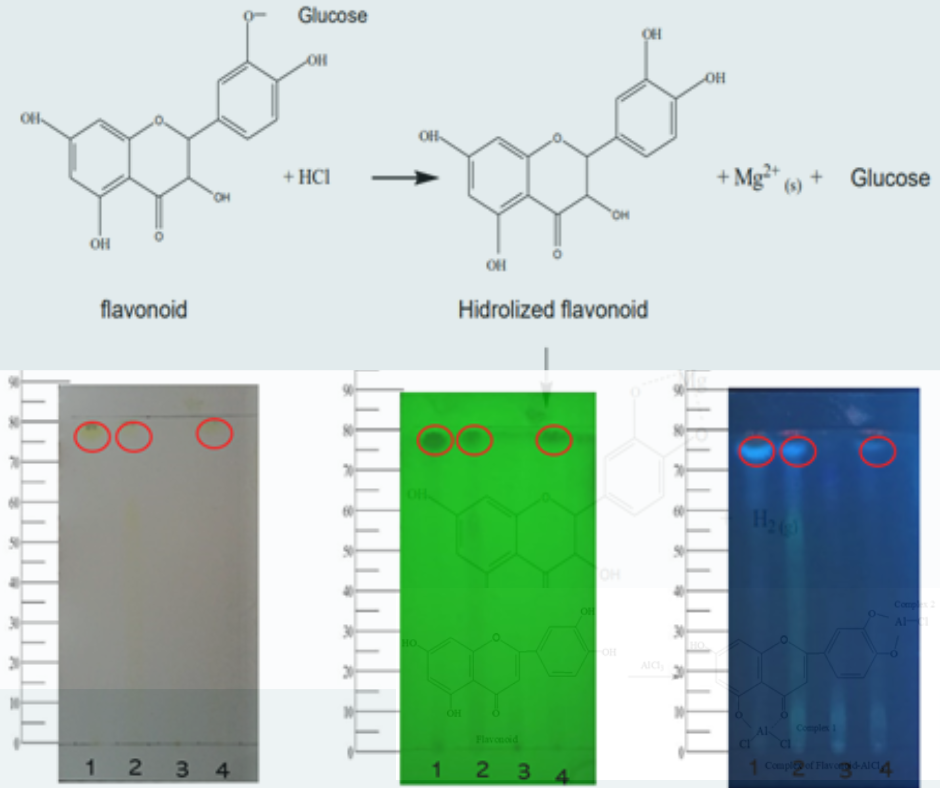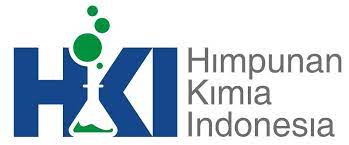
Determination of total flavonoid content from extract and fractions of mangrove (Rhizopora mucronata) leaves
Authors
Rahula Vijja Sammanta , Lina Permatasari , Handa Muliasari , Neneng Rachmalia Izzatul Mukhlishah , Rizqa Fersiyana DeccatiDOI:
10.29303/aca.v7i2.199Published:
2024-10-31Issue:
Vol. 7 No. 2 (2024)Keywords:
Rhizopora mucronata leaves, total flavonoid content, spectrophotometry UV/Vis, Thin Layer Chromatography, MangroveArticles
How to Cite
Downloads
Abstract
Indonesia, an archipelagic country, includes Lombok Island, known for its extensive mangrove forests, where Rhizopora mucronata is the dominant species. Rhizopora mucronata, from the Rhizoporaceae family, is known for its antibacterial, antifungal, and antioxidant properties due to its secondary metabolites, including flavonoids. However, research on the flavonoid content of its leaves remains unexplored. This study aimed to determine the total flavonoid content in extracts and fractions of R. mucronata leaves using the UV-Vis spectrophotometric method. Leaves were extracted with 96% ethanol using sonication and fractionated with n-hexane, ethyl acetate, and water. The extract and fractions yielded 42.33%, 43.15%, 40.49%, 9.74%, and 32.49%, respectively. TLC tests indicated the presence of flavonoids marked by blue spots. The flavonoid contents in the extract and fractions were 12,980; 14,160; 23,880; and 25,350 mg Quercetin equivalent/gram sample (mg QE/g). The total flavonoid content was analyzed using One-way ANOVA, showing higher levels in the n-hexane and ethyl acetate fractions than in the ethanol extract and water fraction. The high flavonoid content contributes to the biological activities of R. mucronata leaves.
References
Egra, S., Mardhiana, Rofin, M., Adiwena, M., Jannah, N., Kuspradini, H., & Mitsunaga, T. (2019). Aktivitas Antimikroba Ekstrak Bakau (Rhizophora mucronata) dalam Menghambat Pertumbuhan Ralstonia Solanacearum Penyebab Penyakit Layu. Agrovigor: Jurnal Agroekoteknologi, 12(1), 26. https://doi.org/10.21107/agrovigor.v12i1.5143
Andini, A. S., & Rahayu, S. M. (2019). Kesesuaian Vegetasi dalam Mitigasi Bencana Tsunami di Teluk Sepi, Lombok Barat. Media Bina Ilmiah, 14(3), 2095. https://doi.org/10.33758/mbi.v14i3.310
Kadir, M. A., Wibowo, E. S., Abubakar, S., & Akbar, N. (2019). Manfaat Mangrove Bagi Peruntukan Sediaan Farmasitika di Desa Mamuya Kecamatan Galela Timur Kabupaten Halmahera Timur (Tinjauan Etnofarmakologis). Jurnal Enggano, 4(1), 12–25. https://doi.org/10.31186/jenggano.4.1.12-25
Batool, N., & Ilyas, N. (2014). Asiatic Mangrove (Rhizophora mucronata) An overview. European Academic Research, 2(3), 3351.
Kusumowati, I. T. D. (2012). Korelasi Kandungan Fenolik dan Aktivitas Antiradikal Ekstrak Etanol Daun Empat Tanaman Obat Indonesia (Piper bettle, Sauropus androgynus, Averrhoa bilimbi, dan Guazuma ulmifolia). Pharmacon: Jurnal Farmasi Indonesia, 13(1), 1–5. https://doi.org/10.23917/pharmacon.v13i1.19
Manik, D. F., Hertiani, T., & Anshory, H. (2014). Analisis Korelasi Antara Kadar Flavonoid dengan Aktivitas Antibakteri Ekstrak Etanol dan Fraksi-fraksi Daun Kersen (Muntingia calabura L.) terhadap Staphylococcus aureus. Khazanah, 6(2), 1–11. https://doi.org/10.20885/khazanah.vol6.iss2.art1
Gurudeeban, S., Kaliamurthi, S., Sheik, H. S., & Thiruganasambandam, R. (2014). Molecular docking, isolation and biological evaluation of Rhizophora mucronata flavonoids as anti-nociceptive agents. Biomedicine & Preventive Nutrition, 4(4), 555–560. https://doi.org/10.1016/j.bionut.2014.08.002
Thirunavukkarasu, P., Asha, S., Ramanathan, T., Kannan, D., & Sudhakar, N. (2017). Phytochemical Analysis of Mangrove Derived Crude Plant Extract- Rhizophora Mucronata. Journal of Global Trends in Pharmaceutical Sciences, 8(3), 3813–3820.
Annas, Z.F., Muliasari H, Deccati, R.F., Permatasari, L. & Mukhlishah, N. R. I. (2023). Penentuan kadar flavonoid total ekstrak dan fraksi-fraksi daun mangrove (Avicennia marina) Determination of total flavonoid content of extract and fractions of mangrove leaves (Avicennia marina). Journal Aggrotek UMMAT, 10(3), 271–282.
Mahran, I. T., Suhartini, S., & Sucipto, S. (2019). Optimasi Ekstraksi Ultrasonik Daun Kecubung Sebagai Agen Anti Bakteri Jerawat Propionibacterium Acnes (Kajian: Raio Pelarut Terhadap Bahan dan Lama Waktu Sonikasi). Jurnal Keteknikan Pertanian Tropis dan Biosistem, 7(2), 137–147
Chen, A., Xiang, W., Liu, D., Liu, C., & Yang, L. (2016). Determination of Total Flavonoids and Its Antioxidant Ability in Houttuynia cordata. Journal of Materials Science and Chemical Engineering, 04(02), 131–136. https://doi.org/10.4236/msce.2016.42014
Zhang, Q.-W., Lin, L.-G., & Ye, W.-C. (2018). Techniques for extraction and isolation of natural products: A comprehensive review. Chinese Medicine, 13(1), 20. https://doi.org/10.1186/s13020-018-0177-x
Candra, L. M. M., Andayani, Y., & Wirasisya, D. G. (2021). Pengaruh Metode Ekstraksi Terhadap Kandungan Fenolik Total dan Flavonoid Total Pada Ekstrak Etanol Buncis (Phaseolus vulgaris L.). Jurnal Pijar Mipa, 16(3), 397–405. https://doi.org/10.29303/jpm.v16i3.2308
Li, C., Ge, Y., Wan, D., Hu, J., Ying, C., & Wang, L. (2011). Optimization of Extraction Condition and Quantification of Total Flavonoids in Elaeagni Folium. Pharmacognosy Journal, 3(26), 8–12. https://doi.org/10.5530/pj.2011.26.2
Desiani, E., Mardiana, T. Y., Madusari, B. D., & Hidayat, F. N. (2022). Uji Aktivitas Analgesik Ekstrak Daun Mangrove (Rhizophora mucronata) pada Mencit yang diinduksi Asam Asetat dengan Metode Writhing Reflex. Cendekia Journal of Pharmacy, 2(2), 307–317.
Handayani, D., Mun’im, A., & Ranti, A. S. (2014). Optimasi Ekstraksi Ampas Teh Hijau (Camellia sinensis) Menggunakan Metode Microwave Assisted Extraction Untuk Menghasilkan Ekstrak Teh Hijau. Trad. Med. J, 19(1), 7.
Widarta, I. W. R., & Arnata, I. W. (2017). Ekstraksi Komponen Bioaktif Daun Alpukat dengan Bantuan Ultrasonik pada Berbagai Jenis dan Konsentrasi Pelarut. Agritech, 37(2), 148. https://doi.org/10.22146/agritech.10397
Anjaswati, D., Pratimasari, D., & Nirwana, A. P. (2021). Perbandingan Rendemen Ekstrak Etanol, Fraksi n- Heksana, Etil Asetat, dan Air Daun Bit (Beta vulgaris L.) Menggunakan Fraksinasi Bertingkat. Jurnal Farmasi (Journal of Pharmacy), 2(337), 5.
Mustarichie, R. (2017). The antioxidant activity and phytochemical screening of ethanol extract, fractions of water, ethyl acetate and n-hexane from mistletoe tea (Scurrula atropurpureabl. Dans). Asian Journal of Pharmaceutical and Clinical Research, 10, 343. https://doi.org/10.22159/ajpcr.2017.v10i2.15724
Permatasari, L., Riyanto, S., & Rohman, A. (2019). Baccaurea racemosa (Reinw. ex Blume) Müll. Arg. pulp: A potential naturalantioxidant. Food Research Journal, 3(6), 713–719. https://doi.org/10.26656/fr.2017.3(6).165
Fadhlillah, F. M., Oktaviani, W., & Mariani, R. (2019). Antioxidant activity of Ethanol Extract, n-Hexane fraction, Ethyl Acetate fraction and Water fraction of Garut Orange Leaves (Citrus reticulata Blanco). Journal of Physics: Conference Series, 1402(5), 055083. https://doi.org/10.1088/1742-6596/1402/5/055083
Ikalinus, R., Widyastuti, S. K., & Setiasih, N. L. E. (2015). Skrining Fitokimia Ekstrak Etanol Kulit Batang Kelor (Moringa oleifera). Indonesia Medicus Veterinus, 4(1), 9.
Iskandar, D. (2020). Aplikasi Uji Skrining Fitokimia Terhadap Daun Uncaria tomentosa Sebagai Bahan Utama Dalam Pembuatan Teh. Jurnal Teknologi Technoscientia, 12(2), 153–158. https://doi.org/10.34151/technoscientia.v12i2.2659
Mariana, L., & Andayani, Y. (2013). Analisis Senyawa Flavonoid Hasil Fraksinasi Ekstrak Diklorometana Daun Keluwih. Chem Prog, 6(2), 52–53.
Haeria, Hermawati, & Pine, A. T. U. (2016). Penentuan Kadar Flavonoid Total dan Aktivitas Antioksidan Ekstrak Etanol Daun Bidara (Ziziphus spina-christi L.). Journal of Pharmaceutical and Medicinal Sciences, 1(2), 57–61.
Sopiah, B., Muliasari, H., & Yuanita, E. (2019). Skrining Fitokimia dan Potensi Aktivitas Antioksidan Ekstrak Etanol Daun Kastuba (Euphorbia pulcherrima Willd.). Jurnal Ilmu Kefarmasian Indonesia, 17(1), 27–33.
Kumar, S., & Pandey, A. K. (2013). Chemistry and Biological Activities of Flavonoids: An Overview. The Scientific World Journal, 2013(1), 1–16. https://doi.org/10.1155/2013/162750
Razoki, Butar-Butar, R. G. S., Neswita, E., Sembiring, N. B., Novriani, E., Simanjuntak, N. J. P., & Pakpahan, E. H. (2023). Uji skrining fitokimia dan pengukuran kadar total flavonoid pada ekstrak paku (Nephrolepis biserrata) dengan fraksi n-heksana, etil asetat, dan air. Journal of Pharmaceutical and Sciences, 6(3), Article 3. https://doi.org/10.36490/journal-jps.com.v6i3.185
Bajalan, I., Zand, M., Goodarzi, M., & Darabi, M. (2017). Antioxidant activity and total phenolic and flavonoid content of the extract and chemical composition of the essential oil of Eremostachys laciniata collected from Zagros. Asian Pacific Journal of Tropical Biomedicine, 7(2), 144–146. https://doi.org/10.1016/j.apjtb.2016.11.022
Xie, L., Deng, Z., Zhang, J., Dong, H., Wang, W., Xing, B., & Liu, X. (2022). Comparison of Flavonoid O-Glycoside, C-Glycoside and Their Aglycones on Antioxidant Capacity and Metabolism during In Vitro Digestion and In Vivo. Foods, 11(6), 882. https://doi.org/10.3390/foods11060882
License
Copyright (c) 2024 Rahula Vijja Sammanta, Lina Permatasari, Handa Muliasari, Neneng Rachmalia Izzatul Mukhlishah, Rizqa Fersiyana Deccati

This work is licensed under a Creative Commons Attribution-NonCommercial-ShareAlike 4.0 International License.
Authors who publish with ACA: Acta Chimica Asiana agree to the following terms:
- Authors retain copyright and grant the journal right of first publication with the work simultaneously licensed under a Creative Commons Attribution-NonCommercial-ShareAlike 4.0 International License. This license allows authors to use all articles, data sets, graphics, and appendices in data mining applications, search engines, web sites, blogs, and other platforms by providing an appropriate reference. The journal allows the author(s) to hold the copyright without restrictions and will retain publishing rights without restrictions.
- Authors are able to enter into separate, additional contractual arrangements for the non-exclusive distribution of the journal's published version of the work (e.g., post it to an institutional repository or publish it in a book), with an acknowledgement of its initial publication in ACA: Acta Chimica Asiana.
- Authors are permitted and encouraged to post their work online (e.g., in institutional repositories or on their website) prior to and during the submission process, as it can lead to productive exchanges, as well as earlier and greater citation of published work (See The Effect of Open Access).





 Indonesian Chemical Society, Chapter Nusa Tenggara. Jalan Majapahit 62 Mataram, University of Mataram, 83125, Indonesia
Indonesian Chemical Society, Chapter Nusa Tenggara. Jalan Majapahit 62 Mataram, University of Mataram, 83125, Indonesia





